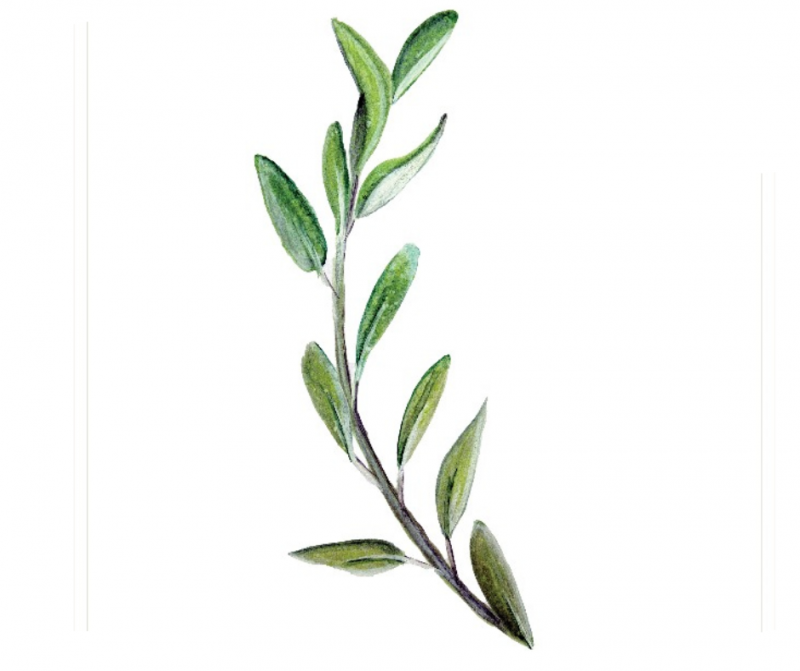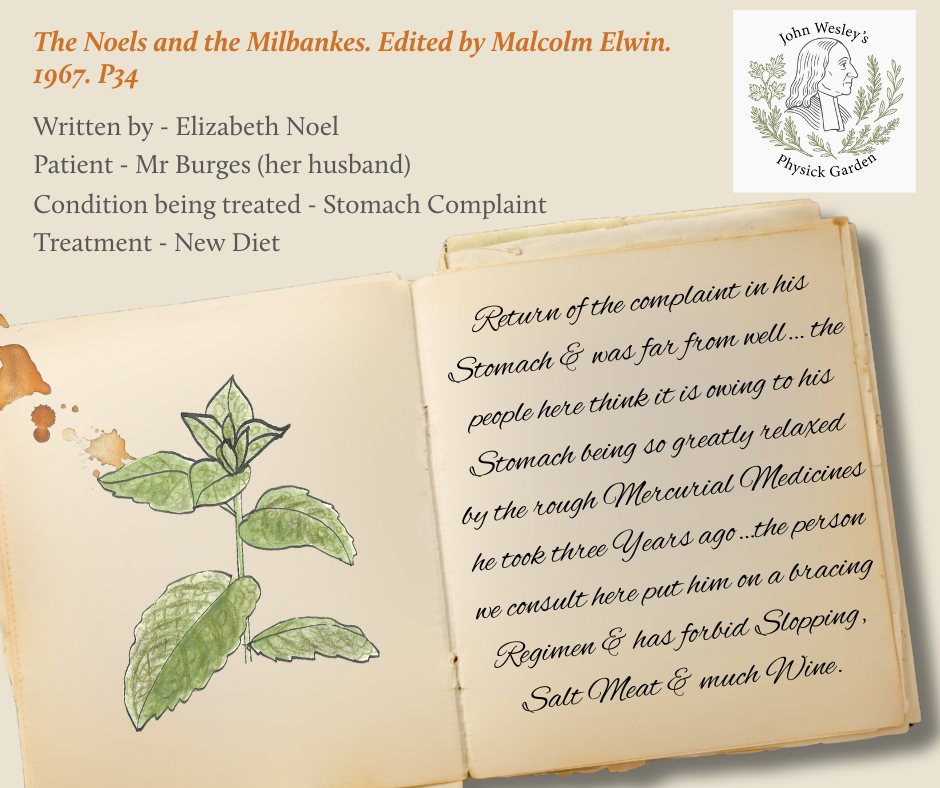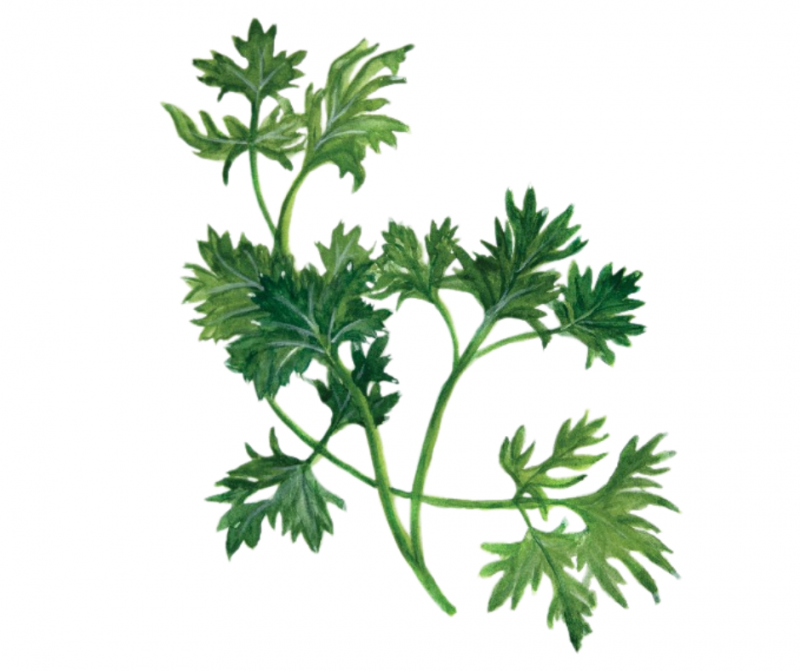The numbers listed under each plant are the number of the remedy as it appears in the 1780 edition of Primitive Physick.
Chamomile (Chamaemelum nobile)
Chamomile (camomile)was called “Earth Apple” by the ancient Greeks as the smell is similar to the fruit. It was a sacred herb to the ancient Egyptians
Wesley’s recommendations:
2 – Ague (an ague is an intermitting fever, each fit of which is preceded by a cold shivering and goes off in sweat) – A large spoonful of powdered chamomile flowers
39 – Cholic – Chamomile tea
133 – The Heart Burning – Decoction of chamomile flowers
182 – A Stronger Purge – A tablespoonful of tincture of jalap in a morning, fasting, in a cup of cold chamomile tea
221 – Pain in the stomach from bad digestion – Take fasting. or in the fit, half a pint of chamomile tea. Do this five or six mornings
282 – Worms – Boil half an ounce of aloes, powdered with a few springs of rue, wormwood and chamomile, in half a pint of gall, to the consistency of a plaister, spread this on thin leather and apply it to the stomach. changing it every twelve hours, for three days, then take 15 grains of jalap, and it will bring vast quantities of worms away, some burst and some alive. This will cure when no internal medicine avails.
Other therapies
Renowned for its sedative properties, a tea made from fresh or dried flowers relieves insomnia, digestive disorders, travel sickness and hyper-activity in children. It is one of the most popular aromatherapy oils because it is so calming and gentle with a multitude of therapeutic qualities.
Fennel (Foeniculum vugare)
Fennel has always been said to give the eater courage. Ancient Greek athletes ate it, hoping it would improve their performance and strength and the old herbalists recommended it to improve the memory. In the Middle Ages it was eaten to fight the pangs of hunger and in the 17th century as believed to be an antidote for the bite of a snake or to ease the suffering of those who had eaten poisonous herbs or mushrooms.
Wesley’s recommendations:
133 – The Heart Burning – Chew and swallow the spittle. Sometimes a vomit is needful
Other therapies
All parts of this plant can be used therapeutically particularly in the treatment of digestive disorders in both children and adults: colic, wind, IBS etc.
Sage (Salvia Officinalis)

The name comes from the Latin word salvare, meaning to save, and originated in the Mediterranean regions, where it was thought a sacred herb by the Greeks and Romans, being dedicated to Zeus and Jupiter. The Romans gathered it with ceremony: a special knife was used, not iron because sage reacts with iron salts.
The sage gatherer chosen had to have clean clothes, have clean feet and make a sacrifice of food before the ceremony could begin. It symbolized domestic virtue. It was introduced into this country in the 16th century, when sage butter and sage tea were widely used. The Chinese valued sage so highly that in the 17th century, Dutch merchants found they could trade one chest of sage for three chests of China tea.
Wesley’s recommendations:
14 – Spitting Blood –Three spoonfuls of sage juice in a little honey
221 – Pain in the stomach from bad digestion – From ten to twenty drops of elixir of vitriol in sage tea, twice or thrice a day
Other therapies
Common sage is grown in parts of Europe for distillation of an essential oil, although other species such as Salvia fruticosa may also be harvested and distilled with it
Hops (Humulus lupulus)
Hops are native to this country and were originally used as a vegetable. The young shoots taste like asparagus. In the reign of Henry VIII hops were used in the brewing of beer for the first time, replacing bitter herbs like alecost
Wesley’s recommendations:
283 – Flat Worms – Mix a spoonful of Norway tar in a pint of small beer, take it as soon as you can in the morning, fasting. This brought away a tape worm thirty six feet in length.
Other therapies:
Hops are used to improve sleep, lower libido and increase the secretion of digestive juices so aiding digestion. Hops have been used medicinally for centuries, especially as a sedative. A pillow stuffed with hops cured the insomnia of George III
“On the 4th of June, 1698. a young Man, about Thirty Years of Age, was seiz’d with a Fever, great Pain in his Side, Spitting of Blood, and Difficulty of Breathing. He began the Cure by Opening a Vein, and repeated the same the next Day, on the 3d he sweated, on the 4th he seem’d to be much better; but from thence to the 5th he had a Delirium, which went off the next Morning. The Delirium not being preceded by the usual Signs, occasion’d a Suspicion of Worms, and finding withal a great many in his Excrements by Stool, he prescrib’d a purging Medicine the next Morning (which has been very successful in that Case) an Hour after the taking it, the Patient found something stir in his Body, which Motion continu’d two Hours, and determin’d in the Issuing forth of a live Worm, or rather Link of Worms, four Ells three Inches in Length, being the Cucurbitini, which are particularly describ’d.” (Nicolas Andry de Bois-Regard (1658 – 13 May 1742) –An Account of the Breeding of Worms in Human Bodies – p. 34)
Parsley (Petroselinum crispum)
The ancient Greeks thought parsley a sacred herb and used it in funeral ceremonies. It was also used to make garlands to crown the winners of the Isthmian Games. Hercules is said to have chosen parsley for his garlands. Whilst the Greeks fed it to their horses the Romans are said to have eaten great quantities of parsley, believing it would prevent intoxication. Parsley was introduced to this country from southern Europe in the sixteenth century.
The flat leaved variety was the first one known here. There are many superstitions which surround the herb. In some places it is thought unlucky to offer it as a gift, or to move it to a new house. In some places only children are allowed to plant the seeds.
There is also a legend connected with the length of time it takes to germinate, which says that it has to go to the devil and return seven times before it will grow. Another legend insists that for a fine harvest the seeds should be planted on Good Friday.
Wesley’s recommendations:
133 – The Heart Burning – Chew parsley and swallow the spittle. Sometimes a vomit is needful
Other therapies
This popular herb is cultivated worldwide and all parts are used medicinally. It is one of the most nutritionally rich foods especially as it is usually eaten raw. It is a traditional diuretic and is exceptionally high in vitamin C and carotenes. People who eat foods rich in these antioxidants have a lower risk of cancer, heart disease, cataracts and strokes.








